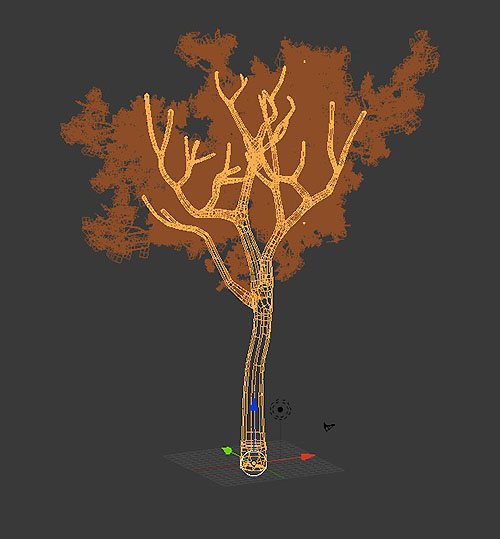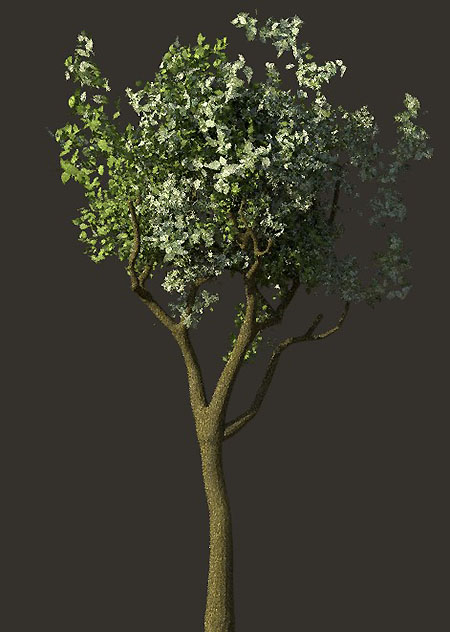You are here
Under Pressure
It’s hard to fathom the idea of negative pressures. Pressure is always a force added, something pushing against and weighing down. What a tree does to move water goes completely against both gravity and our sense of what pressure can do. Thanks to a few simple properties, like the fact that water molecules stick to each other and that trees lose a lot of water, trees don’t maintain an active circulatory system like ours, but instead use a gradient of negative pressures to drive evaporating water from leaves and replenish it with a continuous chain of water molecules pulled up from the soil.
Water transport in trees is a very counter-intuitive thing. So much of what draws us to trees—their majestic height, their ubiquity—seems somewhat suspect in light of a water transport mechanism that relies on the stickiness of water molecules. But in conjunction with structural features like conduits of the right size and shape, the cohesive force of water molecules is enough that water can be pulled up into tree of incredible heights.
![[Measuing the soil moisture around one of our saplings in Lyford garden. Photo by Sarah Plisinksi.]](/sites/default/files/Measuring%20soil%20moisture%20photo.jpg) When the tug of water in a tree meets resistance from dry soil, the pressures experienced by the tree can reach dangerously low values, values so low that bubbles of dissolved air are pulled out of solution. Rather than allowing the connectivity of their water to be severed, many trees have built in redundancy in their networks, or they can tap into unsual reservoirs. These include tiny reserves of water scattered within the nooks and crannies between cells that can be drawn upon in times of drought, and used to forge new links between the water rising from the roots to the leaves.
When the tug of water in a tree meets resistance from dry soil, the pressures experienced by the tree can reach dangerously low values, values so low that bubbles of dissolved air are pulled out of solution. Rather than allowing the connectivity of their water to be severed, many trees have built in redundancy in their networks, or they can tap into unsual reservoirs. These include tiny reserves of water scattered within the nooks and crannies between cells that can be drawn upon in times of drought, and used to forge new links between the water rising from the roots to the leaves.
Features like these make understanding anatomy and three dimensional structure a helpful tool for understanding water transport systems. This summer our group is working on measuring the pressures of water conducting networks in four different tree species subjected to different drought treatments. We are looking to see if there is plasticity in the water conducting networks, and if the structures of those networks change under stressful conditions. Thus far the project has been an amazing medley of experiences. We have done pre-dawn water potential measurements at 3am, counted insects at midnight, done work with 3D modeling and virtual reality, and been exposed to an amazing variety of lab techniques and tools. The program has given me a great sense of what a future in research might look like, and has meant the chance to explore a topic I love in a really low-pressure setting with an incredibly fun group of fellow researchers.


![[Tree model created in Blender. Texture credit Steve Lund.]](/sites/default/files/3rd%20tree%20model.jpg)
![[Pressure chamber, a.k.a “pressure bomb,” used to measure the water potential of leaves.]](/sites/default/files/pressure%20bomb%20photo.jpg)
Katja is a rising Junior at Harvard studying Integrative Biology.

